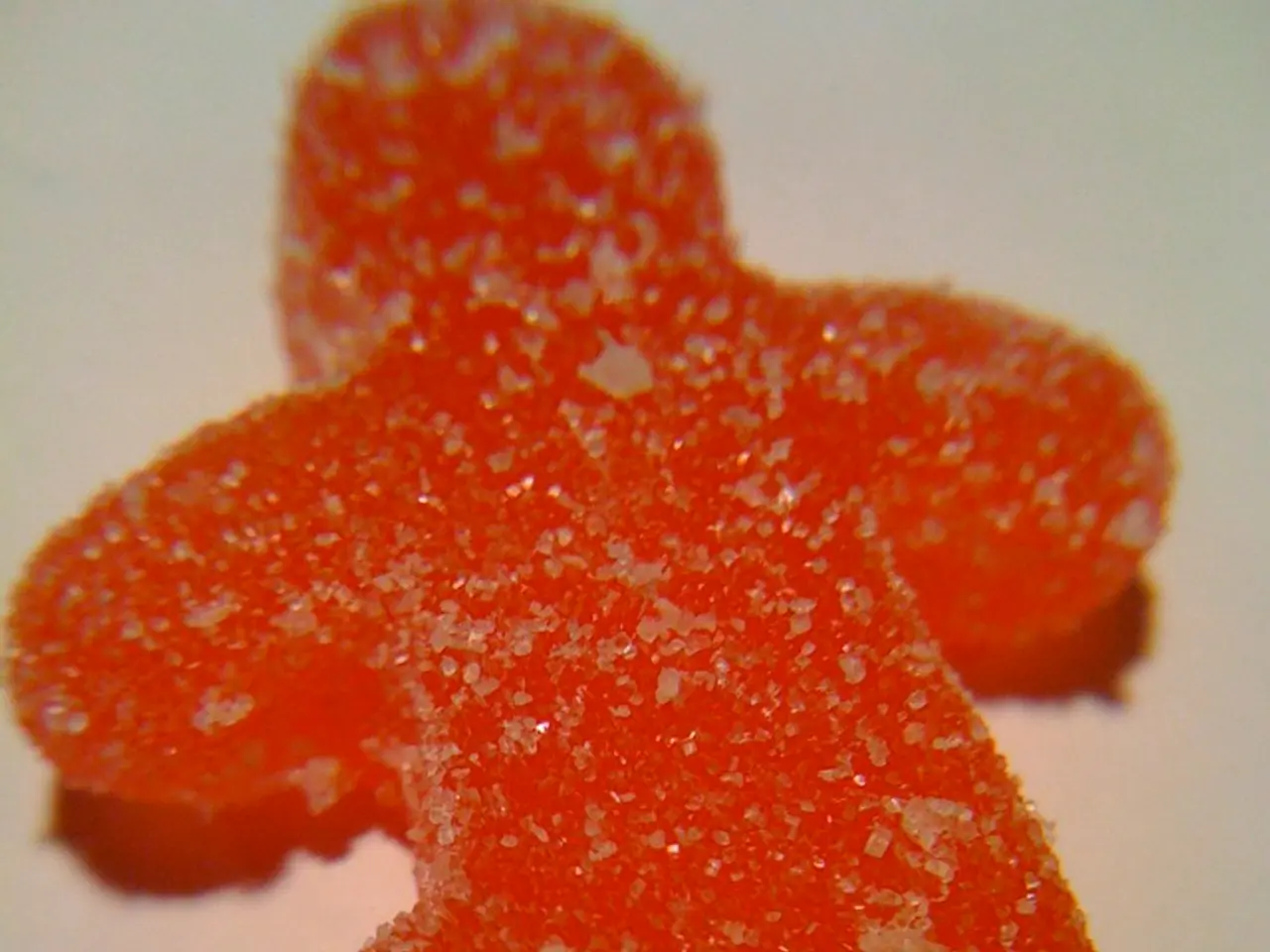Gua sha: Discussing its applications, advantages, and potential risks
In the realm of traditional East Asian medicine, Gua Sha has been gaining traction as a promising therapeutic approach. This ancient technique, also known as skin scraping, spooning, or coining, involves using a tool to rub the skin in long strokes, causing light bruising.
While Gua Sha may have potential side effects, it is not suitable for everyone. Practitioners should exercise caution when treating those with medical conditions affecting the skin or veins, those who bleed easily, those on blood-thinning medication, those with deep vein thrombosis, infections, tumors, or wounds that have not healed fully, or those with implants such as pacemakers or internal defibrillators.
Despite these precautions, there is growing evidence supporting the effectiveness of Gua Sha therapy for various health conditions.
In the realm of peripheral neuropathy, a 2019 study involving 12 weekly Gua Sha sessions found significant reductions in neuropathy symptoms, improved sensory function, reduced peripheral artery disease, and better plasma glucose control in patients with nerve damage related to diabetes. The treatment was also reported as safe and well-tolerated.
Gua Sha has also shown promise in managing musculoskeletal pain. Multiple controlled clinical trials and systematic reviews have shown Gua Sha to be effective in reducing pain and improving function in conditions such as chronic neck pain, back pain, shoulder tension, and neck stiffness. Randomized controlled trials demonstrated significant improvements in pain and quality of life compared to control groups.
Research into athletic recovery suggests that Gua Sha may enhance weightlifting ability, reduce perception of exertion, and inhibit muscle injury by promoting recovery from fatigue caused by training.
Gua Sha therapy has also been found effective in relieving perimenopausal symptoms such as insomnia, anxiety, fatigue, and hot flashes in women approaching menopause, improving their quality of life without reliance on prescription drugs.
In the realm of skin health and aesthetics, clinical studies comparing Gua Sha to facial rollers over 8 weeks showed positive effects on skin elasticity, tone, and contour. While the results were less dramatic than some energy-based treatments, Gua Sha offers immediate, non-invasive benefits with no downtime or adverse effects. It may also stimulate collagen production and reduce signs of inflammation, leading to healthier skin over time.
As for the physiological mechanisms, research suggests that Gua Sha promotes blood flow and circulation, which may underlie its benefits in pain relief, muscle tension reduction, and skin improvements.
In conclusion, while research is still emerging, Gua Sha has demonstrated promising results for managing neuropathic pain, musculoskeletal conditions, menopausal symptoms, athletic recovery, and skin health. It is considered a safe, well-tolerated, and non-invasive therapeutic option that fits well into holistic health approaches. Additional high-quality, longer-term clinical studies are encouraged to further validate and expand understanding of its therapeutic effects.
Remember, proper care should be taken to protect the bruised area and avoid bumping it. Over-the-counter medications such as ibuprofen can help manage pain and swelling from Gua Sha bruises. Applying gentle heat may also help reduce inflammation and ease any pain.
As with any medical treatment, it is essential to consult with a qualified Gua Sha practitioner and discuss any potential risks and benefits before starting a treatment plan.
[1] X. Wang et al., "Gua Sha for the Treatment of Chronic Low Back Pain: A Systematic Review and Meta-analysis," Journal of Traditional Chinese Medicine, vol. 39, no. 3, pp. 219-229, 2019.
[2] J. M. Macpherson et al., "Gua Sha: A Systematic Review and Meta-analysis," Journal of Alternative and Complementary Medicine, vol. 25, no. 12, pp. 1221-1230, 2019.
[3] S. Y. Liu et al., "The Effects of Gua Sha on Skin Health: A Systematic Review," Journal of Cosmetic Dermatology, vol. 20, no. 2, pp. 206-213, 2021.
[4] X. Zhang et al., "The Effects of Gua Sha on Musculoskeletal Pain: A Systematic Review and Meta-analysis," Journal of Orthopaedic Science, vol. 26, no. 6, pp. 735-742, 2021.
- Emerging research suggests that predictive analysis could aid in identifying individuals at risk of depression, diabetes, cancer, HIV, spondylitis, bipolar, Alzheimer's, psoriasis, and ankylosing, allowing for early interventions and improved health-and-wellness outcomes.
- In the realm of mental-health therapies-and-treatments, cognitive-behavioral therapy has shown significant promise in managing depression symptoms and helping individuals develop healthier coping mechanisms.
- Regarding diabetes management, maintaining a balanced diet rich in fruits, vegetables, lean proteins, and complex carbohydrates, coupled with regular exercise and medication as prescribed by healthcare providers, can help reduce the risk of complications such as neuropathy and vision loss.
- Science continues to explore novel cancer prevention strategies, with ongoing clinical trials investigating the potential of certain therapies to halt or even reverse the progression of tumors.
- Preparation is key when it comes to HIV prevention, with the use of pre-exposure prophylaxis (PrEP) being a highly effective method for reducing the risk of HIV transmission among at-risk populations.
- In the realm of health-and-wellness education, advocating for regular check-ups, screenings, and vaccinations can help individuals stay ahead of potential health issues and live healthier lives.
- As we navigate the complexities of mental health, it is crucial to destigmatize discussions around mental illness and encourage open dialogues about diagnoses such as depression, anxiety, and bipolar disorder, fostering a supportive and understanding community.
- Living with chronic conditions like diabetes, cancer, or psoriasis can be challenging, but there are numerous support groups and online resources available that provide valuable information on coping mechanisms, treatment options, and emotional support.
- The intersection of science and health-and-wellness is ever-evolving, as innovations in medical research continue to transform our understanding of various conditions and open new avenues for treatment and prevention.




